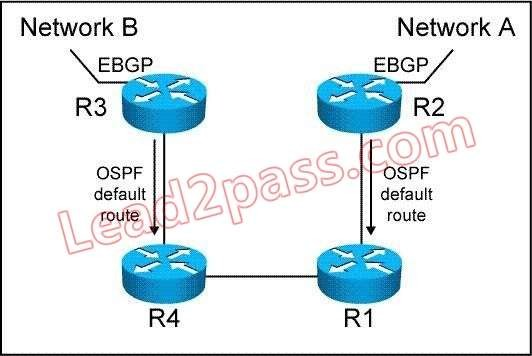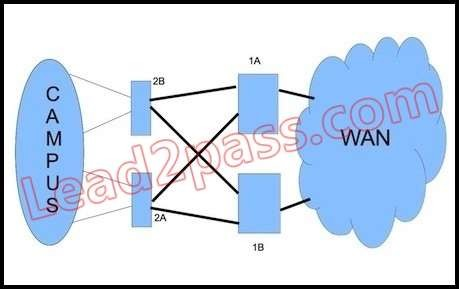Cisco® 352-001 Exam Practice Questions (P. 5)
- Full Access (253 questions)
- Six months of Premium Access
- Access to one million comments
- Seamless ChatGPT Integration
- Ability to download PDF files
- Anki Flashcard files for revision
- No Captcha & No AdSense
- Advanced Exam Configuration
Question #21
Which statement is true about connecting an IP multicast domain that is operating in PIM dense mode to a PIM sparse mode domain?
- AThe interconnection must be made at the rendezvous point of the PIM sparse mode domain.
- BThe connection can be made at any location in the network, as PIM sparse mode will inter-operate seamlessly with PIM dense mode.
- CPIM dense mode and sparse mode domains are not inter-operable and cannot be connected.
- DThe connection can be made at any location in the network, but PIM sparse mode and PIM dense mode cannot inter-operate; IGMP must be used to provide the interconnection.
Correct Answer:
A
A
send
light_mode
delete
Question #22
Two MPLS service providers (SP1 and SP2) are offering inter-provider RFC 2547/4364-based IP-VPN service to an enterprise customer. IP traffic among some of the customer's sites has to traverse both of the service providers. The service providers and the enterprise do not know what the minimum MTU is along the end- to-end path.
What could be done to guarantee that large packets are not dropped for MTU-related reasons?
What could be done to guarantee that large packets are not dropped for MTU-related reasons?
- Aenable Path MTU Discovery on all devices within SP1 and SP2
- Benable Path MTU Discovery on all devices within the enterprise
- Cconfigure the IP sender or senders to set the DF flag in the IP header
- Dconfigure the IP sender or senders to clear the DF flag in the IP header
Correct Answer:
B
B
send
light_mode
delete
Question #23
Refer to the exhibit. R2 and R3 are running EBGP and are learning Network A and Network B. R2 and R3 are also running IBGP to exchange Network A and
Network B. OSPF is IGP. R2 and R3 are advertising default routes. R1 and R4 can send and receive traffic from Network A and Network B respectively. However,
Network A cannot send traffic to Network B.
How can you solve this problem?

Network B. OSPF is IGP. R2 and R3 are advertising default routes. R1 and R4 can send and receive traffic from Network A and Network B respectively. However,
Network A cannot send traffic to Network B.
How can you solve this problem?

- Acreate a tunnel between R2 and R3
- Bcreate a tunnel between R2 and R4
- Ccreate static default routes pointing from R1 and R4 to R2 and R3, respectively
- Dconvert R3 and R2 to ABRs so that R1 and R4 can choose the closest ABR to exit the network
Correct Answer:
A
A
send
light_mode
delete
Question #24
Which of these is a reason to carry routes that originate outside your network in an EGP, such as BGP, rather than in your IGP, such as OSPF, EIGRP, or IS-IS?
- Ato provide better control over the distribution of the default route inside your network
- Bto prevent failures outside your network from impacting your internal network operation
- Cto provide faster convergence to destinations outside your network
- Dto provide a growth path for the core of your network
Correct Answer:
B
B
send
light_mode
delete
Question #25
Refer to the exhibit. How would you adjust the design to improve convergence on the network?


- AAdd an intra-POP link between routers 1A and 1B, and enable IP LFA FRR.
- BUse an IP SLA between the end stations to detect path failures.
- CEnable SSO-NSF on routers 1A and 1B.
- DUse BGP to connect the sites over the WAN.
Correct Answer:
A
A
send
light_mode
delete
All Pages
